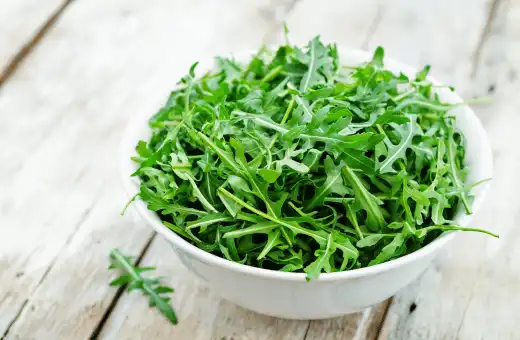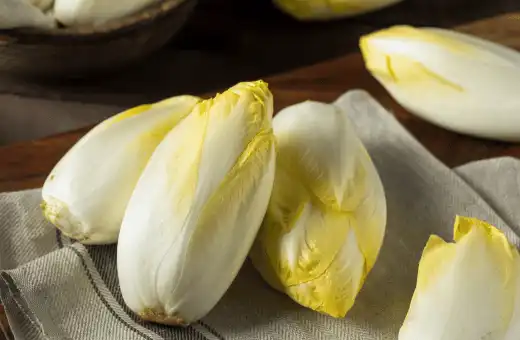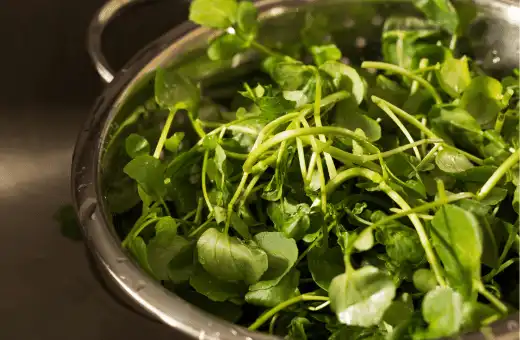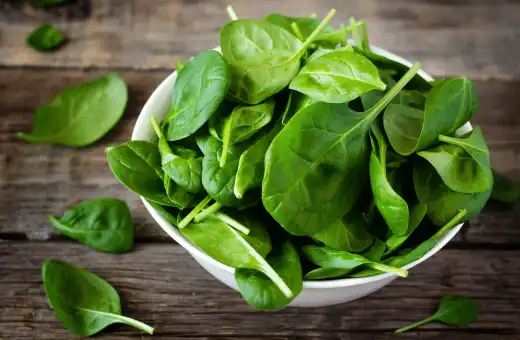Dandelion greens are the perfect addition to any meal. They have a slightly bitter taste and offer a ton of nutrients, making them a healthy choice for your diet.
However, if you’re unable to find dandelion greens or are in need of a quick substitution, we’ve got you covered.
We have collected a list of the seven best substitutes for dandelion greens and will share how to use them and the correct ratios in your dishes.
Whether a chef or a home cook, these alternatives are excellent options.
In short, " What can I use instead of dandelion greens?" Arugula, Baby Spinach, Endive, Mustard Greens, Kale, Radicchio, Watercress, Chicory, Spinach.
What are dandelion greens, and what do dandelion greens taste like?
Dandelion greens are the leaves of the common dandelion plant, scientifically known as Taraxacum officinale.
These edible greens have been consumed for their nutritional and culinary benefits for centuries. They are known for their slightly bitter taste and unique flavor profile.
Dandelion greens have a distinct taste that is often described as mildly bitter, peppery, and slightly earthy.
The bitterness of the greens can vary depending on the plant’s maturity and the specific variety. Younger leaves tend to be less bitter, while older leaves can have a stronger bitterness.
Despite the bitterness, dandelion greens also possess a pleasant and refreshing flavor. Some compare the taste to arugula or radicchio.
The peppery notes provide a subtle spiciness, while the earthy undertones add depth to the overall taste.
When cooked, the bitterness of dandelion greens tends to mellow out, and they develop a more complex flavor.
They can be sautéed, steamed, or added to soups, stews, and salads. Mixing them with other ingredients and flavors can help balance the bitterness and enhance their overall taste.
Dandelion greens are not only valued for their taste but also for their nutritional content. They’re high in vitamins A, C, and K, as well as antioxidants and minerals.
Including dandelion greens in your diet can provide a unique flavor experience along with potential health benefits.
In summary, dandelion greens are edible leaves with a slightly bitter, peppery, and earthy taste.
While their bitterness may be an acquired taste, they offer a refreshing flavor profile that can be enjoyed in various culinary preparations.
Uses of dandelion greens
Dandelion greens are versatile and nutrient-packed vegetable that can be used in various ways.
The leaves can be cooked or steamed, served as a nutritious side dish, or added to salads.
They have a pleasant bitter flavor that pairs well with other greens, such as kale and Spinach. Dandelion greens are also commonly cooked together with garlic and onions for a flavourful side dish.
When cooked, the leaves become tender and retain some of their crunchiness.
Dandelion greens can also be eaten raw in salads or sandwiches, adding texture, flavor, and nutrition to a meal.
The roots of dandelions can also be used as food sources.
They can be roasted like coffee beans or boiled like potatoes for an earthy flavor, often described as being similar to chicory root coffee.
Where to buy dandelion greens?
If you are looking for dandelion greens where to buy, there are a few extra places you can go. Many specialty food stores carry it, as do some international grocery stores.
You can also order online from many retailers that provide a variety of diverse flavors and types of dandelion greens.
1. Arugula – an ideal substitute for dandelion greens

Similar in taste and texture to dandelion greens, arugula is a great substitute. It can be eaten raw on salads or cooked into dishes.
Ratio or measurement: When substituting for an amount of dandelion greens, use an equal amount of arugula.
2. Baby Spinach – similar taste to dandelion greens
With its mild earthy flavor and softer leaves, baby spinach makes an excellent substitute for dandelion greens. It’s often used in salads or sautéed as a side dish.
Ratio or measurement: Substitute with a 1:1 ratio.
3. Try Endive to replace dandelion greens

Another close substitute for dandelion greens is Endive. Endive offers a slightly bitter taste and can be eaten raw or cooked.
Ratio or measurement: Use a 1:1 ratio when substituting dandelion greens with Endive.
4. Mustard Greens – similar taste to dandelion greens
For those who want a bit more additional spice, try mustard greens. They have a peppery taste and are an excellent addition to soups or stir-fries.
Ratio or measurement: Substitute with a 1:1 ratio.
5. Kale – a great alternative to dandelion greens

With its earthy taste and slightly bitter flavor, kale is another excellent substitute for dandelion greens. It can use as a base for salads or sautéed as a side dish.
Ratio or measurement: When substituting for dandelion greens, use an equal amount of kale.
6. Radicchio – similar taste like dandelion greens
Radicchio offers a slightly bitter taste and can be eaten raw or cooked. It’s commonly used in Mediterranean cuisine and pairs well with fish dishes.
Ratio or measurement: Use a 1:1 ratio when substituting for dandelion greens.
7. Watercress – a decent replacement for dandelion greens

Although slightly less bitter than dandelion greens, watercress offers a similar taste and adds a unique flavor to dishes. It can be eaten bare as a salad or cooked into dishes.
Ratio or measurement: Substitute with a 1:1 ratio.
8. Chicory – similar taste to dandelion greens
Chicory leaves have a slightly bitter taste similar to that of dandelion greens. They can use in salads, soups, and stews or cooked as a green vegetable sauteed in garlic and olive oil.
Ratio or measurement: The ratio for chicory as a substitution for dandelion greens is 1:1.
9. You can use Spinach instead of dandelion greens

Spinach has a mild taste and is a perfect substitute for the bitterness of dandelion greens. This leafy green vegetable can be counted in salads, soups, and casseroles.
Ratio or measurement: The ratio for Spinach as a substitution for dandelion greens is 1:2. So, use twice as much Spinach for every part of dandelion greens called for.
Substitute for dandelion greens in soup
In soup, you can substitute dandelion greens with other leafy greens like kale, collards, or mustard greens.
These greens contain vitamins and minerals like vitamins A, C, and K, magnesium, manganese and calcium.
They also contain fiber and anti-inflammatory properties, which help to boost the immunity system.
Additionally, the strong flavor of these alliums adds complexity to the soup without overpowering it.
When substituting for dandelion greens in soup, it is best to sauté them lightly before adding them to give a more mellow flavor and texture.
Conclusion on substitute for dandelion greens
While dandelion greens may be hard to come by, these 9 alternatives are the perfect substitutes.
Whether you enjoy hearty greens like kale or slightly bitter leaves like Endive, these are all excellent options.
Remember, when substituting, use a 1:1 ratio or an equal amount of dandelion greens. So next time you’re in a pinch, don’t hesitate to try one of these alternatives. Happy cooking!
FAQs on substitute for dandelion greens
Q1. What is similar to dandelion greens?
Similar to dandelion greens, other leafy greens such as Spinach, kale, and arugula are filled with vitamins and minerals. They also have antioxidant properties and can be cooked or eaten raw in salads.
Other vegetables like Swiss chard, collard greens, turnip greens, and mustard greens feature a similar flavor profile to dandelion greens but contain unique benefits of their own.
Q2. Is dandelion-like Spinach?
Dandelion and Spinach are both leafy green plants, but they differ in many ways. Dandelion leaves have a much more bitter taste than Spinach and can be eaten raw or cooked. The leaves of dandelion are used to make salads, as a garnish for dishes, or as an ingredient in soups.
On the other hand, Spinach is milder and sweeter; it is often eaten cooked as part of a dish or sautéed with butter and garlic. In addition to their taste differences, dandelions have yellow flowers that are often harvested for medicinal purposes, while Spinach does not flower at all.
Nutritionally speaking, dandelion greens contain significantly higher levels of calcium than Spinach, whereas the latter is high in iron and folate. Ultimately, these two leafy greens offer different flavors and nutrient profiles that can add variety to any meal!

